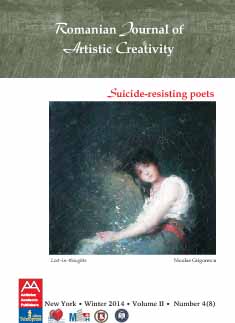Poe’s hieroglyphic universe: the master keys
Poe’s hieroglyphic universe: the master keys
Author(s): Mihai A. StroeSubject(s): Literary Texts
Published by: Addleton Academic Publishers
Keywords: Big Bang theory; Big Crunch hypothesis; periodicity; cause-effect equivalence; hieroglyphic phantom Universe(s); parallel universes; phantasmagoric effect; the Egyptian connection
Summary/Abstract: Edgar Allan Poe elaborated an ambitious cosmological system in Eureka, according to which a primordial material particle (the first cosmic egg of the physical Universe) propagated through a flash-like explosion into infinite space to form the Universe we know. To Poe, planetary systems like the Solar System were “Titanic atoms,” “collossal atoms,” or “systematoms” whose common feature throughout the Universe is physical evolution. Notoriously neglected both in literary criticism and in mainstream science, Poe’s cosmological hypothesis has recently finally been considered from the viewpoint of its scientific value: Alberto Cappi (1994) came to the important conclusion that Poe constructed in Eureka a coherent and consistent Newtonian model of the Universe. Hereby we attempt to show that Poe’s cosmology is romantic in nature by stating that the Universe is “interfinite” in nature, i.e. it is simultaneously finite (as matter) and infinite (as space and as spirit). What is more, Poe’s model of universe anticipates many evolutions in Western thought such as chaos theory, the Big Bang and the Big Crunch theory, the parallel universes hypothesis, etc. We are dealing with a Universe that is doubly hieroglyphic: the cosmic laws and the cosmic events are in Poe’s model eternal like hieroglyphs indelibly painted on an infinite tapestry. This “Egyptian connection” will prove to be extremely relevant in understanding Poe’s cosmological project as a whole, which was meant as itself a “hieroglyphic” solution to the riddle of reality.
Journal: Romanian Journal of Artistic Creativity
- Issue Year: 2014
- Issue No: 4
- Page Range: 19-81
- Page Count: 63
- Language: English
- Content File-PDF

